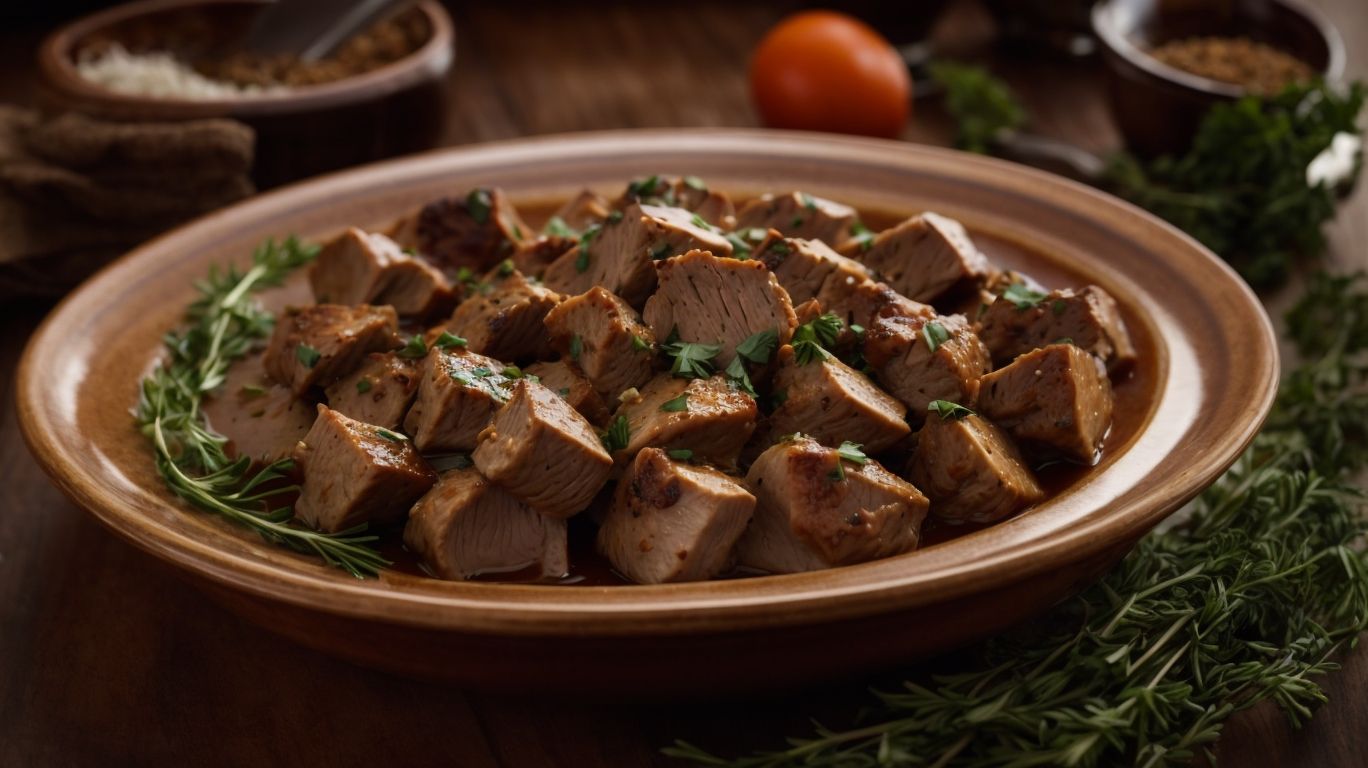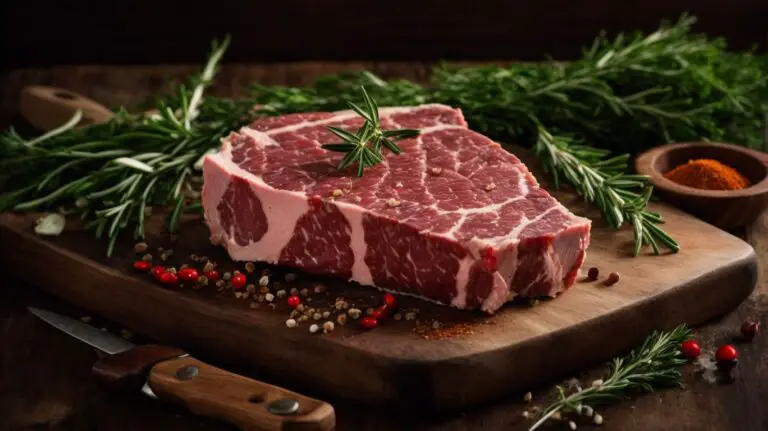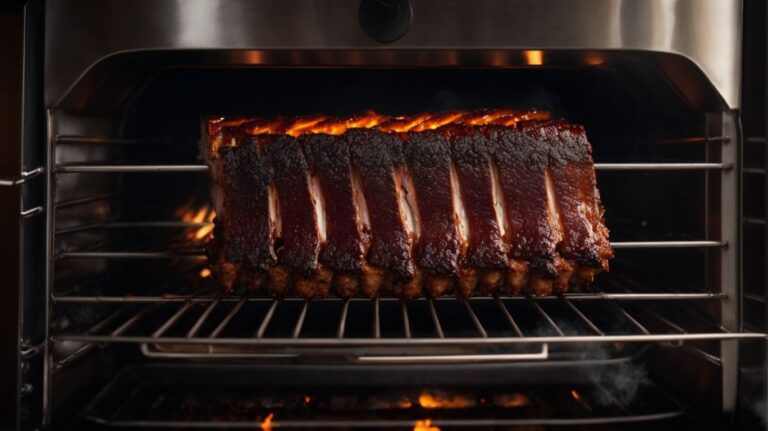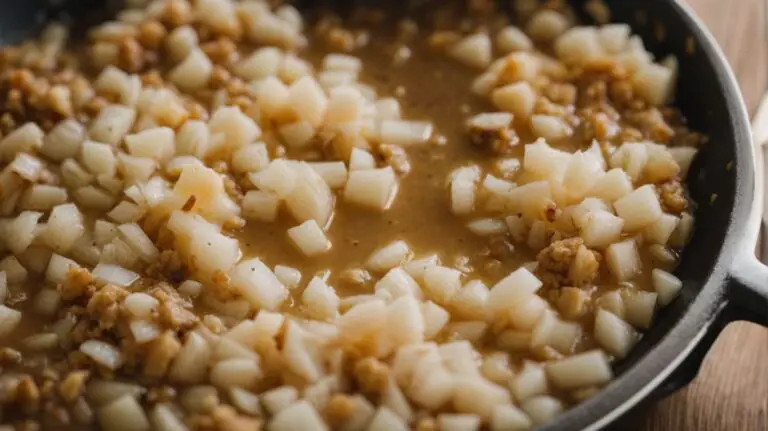How to Cook Turkey Giblets to Eat?
Curious about what turkey giblets are and how to cook them to perfection?
We’ll explore everything you need to know about turkey giblets – from the included organs to preparing and cooking them in various ways. Whether you’re a seasoned chef or a novice in the kitchen, we’ve got you covered with tips and delicious recipes to make the most out of this often overlooked part of the turkey.
Let’s dive in and discover the world of turkey giblets together!
Key Takeaways:
What are Turkey Giblets?
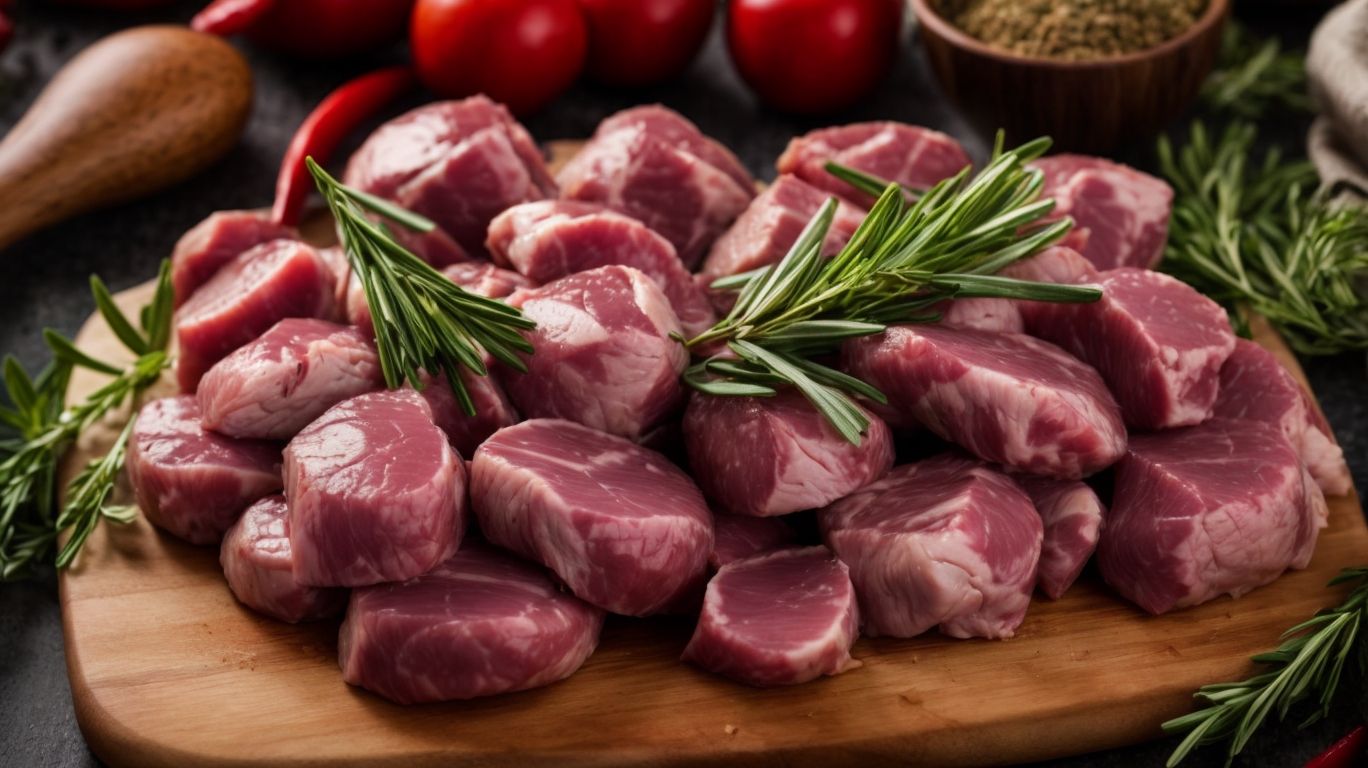
Credits: Poormet.Com – Dylan Lopez
Turkey giblets refer to the edible internal organs of a Thanksgiving turkey, often used to enhance the flavor of various dishes.
Turkey giblets play a crucial role in culinary creations, imparting a rich and savory flavor profile. These organs typically include the liver, heart, gizzard, and sometimes the neck. Each component brings a unique taste and texture to dishes, with the liver offering a deep, earthy flavor, the heart contributing a hearty richness, and the gizzard providing a chewy texture that adds complexity.
When cooked properly, turkey giblets infuse dishes with depth and complexity, transforming simple recipes into gourmet delights. Chefs often use them in stocks, gravies, stuffings, and even pâtés to elevate the overall taste profile of the dish.
What Organs are Included in Turkey Giblets?
Turkey giblets typically include the liver, heart, and neck, providing a mix of flavors and textures for culinary creations.
The liver, a vital organ that filters toxins, is known for its intense flavor and smooth texture, making it a key ingredient in pates and spreads.
The heart, with its robust muscle tissue, adds a rich, meaty taste to dishes like soups and stews.
The neck, while not an organ, contributes collagen and depth to stocks and broths, enhancing the overall umami profile of the dish.
How to Prepare Turkey Giblets for Cooking?
Preparing turkey giblets for cooking involves cleaning, trimming, and sometimes marinating these flavorful organs before incorporating them into recipes.
To begin the process, start by rinsing the turkey giblets under cold water to remove any impurities or excess blood. Be sure to pat them dry with paper towels afterwards. Next, carefully trim off any excess fat or membranes using a sharp knife. It’s important to remove any tough parts to ensure a tender end result.
If you prefer, you can marinate the giblets in a mixture of herbs, spices, and your choice of liquids for added flavor. Allow the giblets to marinade in the refrigerator for a few hours to overnight before cooking. This step can enhance the overall taste of the dish.
Remember, preparing turkey giblets may seem daunting at first, but with these simple steps, you can elevate your recipes and impress your guests with delicious flavors and textures.
Should You Rinse Turkey Giblets Before Cooking?
Rinsing turkey giblets before cooking is a recommended practice to remove any residual blood or impurities, ensuring a clean and safe culinary experience.
By rinsing the turkey giblets thoroughly, you not only eliminate potential contaminants but also enhance the overall flavor of your dish. This step is crucial in upholding food safety standards, as it reduces the risk of bacterial growth. To properly rinse the giblets, start by placing them under cool running water, gently rubbing the surface to dislodge any debris. Consider soaking them for a few minutes in a bowl of water to further purify before proceeding with your recipe.
How to Clean and Trim Turkey Giblets?
Cleaning and trimming turkey giblets involves removing excess fat, membranes, and connective tissue to ensure the organs are ready for cooking and consumption.
One of the primary steps in this process is separating the giblets, which typically include the liver, heart, gizzard, and neck, from the whole turkey. Each organ requires specific attention when cleaning. For instance, the liver needs to be cleaned by rinsing it thoroughly under cold water to remove any impurities or blood clots. The gizzard, on the other hand, should be carefully opened to discard its contents and any tough lining before washing it clean. Trimming excess fat and any undesirable parts is crucial to enhance the flavor and texture of the giblets in various dishes.
Should You Marinate Turkey Giblets Before Cooking?
Marinating turkey giblets before cooking can enhance their flavors and tenderize the organs, leading to more delicious and savory dishes.
One of the main benefits of marinating turkey giblets is that it allows the flavors to penetrate deeply into the meat, creating a more complex taste profile. By using a mixture of herbs, spices, and acidic components, such as vinegar or citrus juice, you can impart a rich and aromatic essence to the giblets. Marination helps to break down tough connective tissues, making the giblets more succulent and juicy upon cooking. Whether you prefer a classic herb-infused marinade or a bold and zesty citrus-based option, the process of marinating truly elevates the overall taste experience.
How to Cook Turkey Giblets?
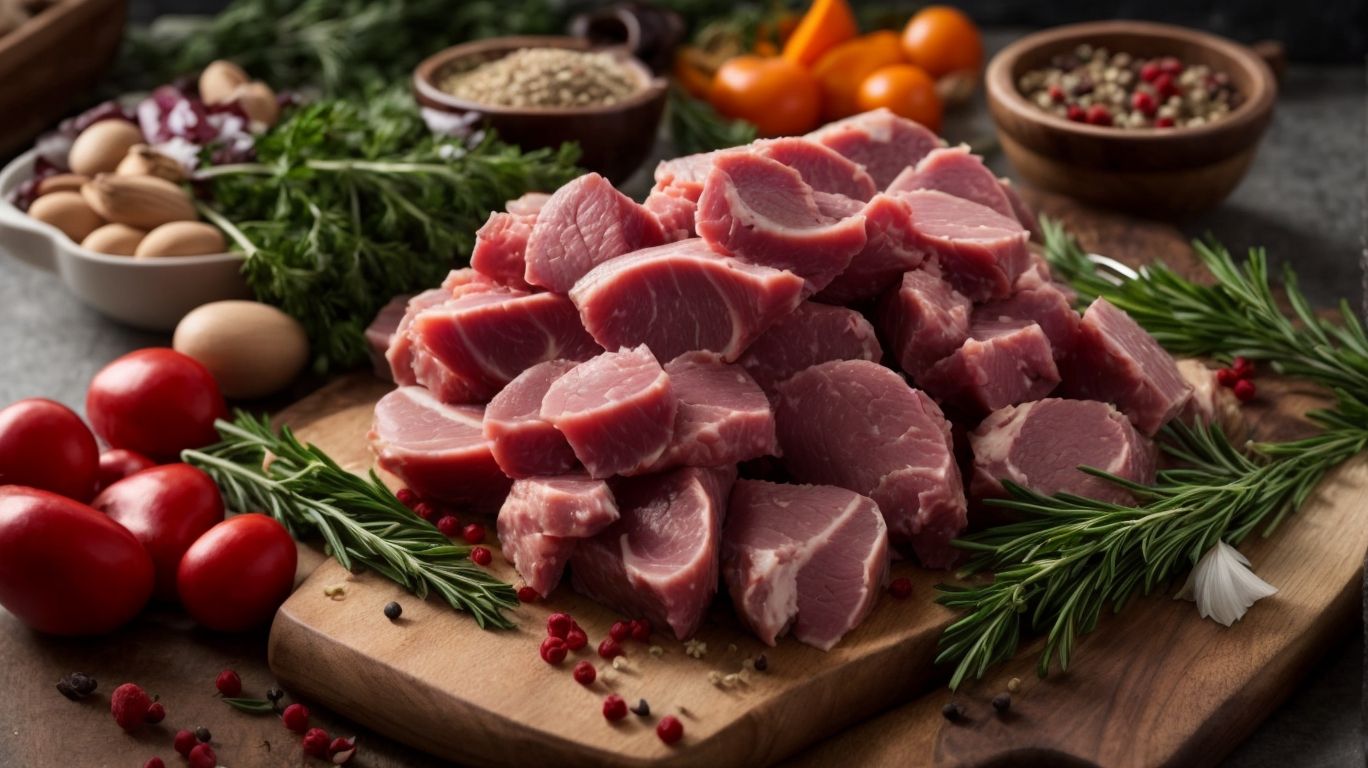
Credits: Poormet.Com – Joe Gonzalez
Cooking turkey giblets offers a range of options including boiling, sauteing, roasting, and grilling, each method imparting unique flavors and textures to the dishes.
When boiling turkey giblets, you can create a flavorful broth by simmering them on low heat with herbs, spices, and vegetables.
Sauteing the giblets involves quickly cooking them in a hot pan with butter or oil until they’re golden brown and tender.
Roasting turkey giblets in the oven enhances their natural flavors, resulting in crispy browned edges and juicy insides.
Alternatively, grilling the giblets over an open flame adds a smoky char and distinct grill marks, ideal for enhancing the overall taste.
Boiling Turkey Giblets
Boiling turkey giblets is a common method that helps tenderize the organs while infusing them with flavors from the cooking liquid.
When boiling turkey giblets, it’s important to start by thoroughly rinsing them under cold water to remove any impurities. You can enhance the flavor by adding onions, garlic, carrots, and bay leaves to the cooking liquid. These ingredients not only add depth but also complement the natural richness of the giblets.
Simmering the giblets over low heat for about 1 to 1.5 hours will ensure they reach the desired level of tenderness. This slow cooking process allows the flavors to meld together, creating a delicious and savory dish.
For those looking to add a bit of zest, consider incorporating black peppercorns, thyme, and parsley into the simmering pot. By experimenting with different herbs and spices, you can tailor the final dish to suit your preferences.
Sauteing Turkey Giblets
Sauteing turkey giblets in a hot pan creates a delicious sear and imparts a rich flavor to the organs, perfect for incorporating into various dishes.
When sauteing turkey giblets, it’s crucial to heat the pan thoroughly before adding the organs. This high heat helps to quickly brown the surface, sealing in the juices and intensifying the flavors. To achieve that golden brown crust, ensure the giblets are spread out evenly in the pan without overcrowding. Seasoning plays a vital role – a sprinkle of salt, pepper, and your favorite herbs or spices will elevate the taste profile. Remember to toss or stir the giblets frequently to prevent sticking and promote even cooking.
Roasting Turkey Giblets
Roasting turkey giblets in the oven yields a flavorful and slightly crispy texture, ideal for adding depth to gravies, stuffings, and other dishes.
When preparing turkey giblets, it’s crucial to start by rinsing them thoroughly and patting them dry. This helps to remove any excess blood or impurities, ensuring a cleaner flavor profile. Once prepped, a simple yet effective seasoning blend can consist of salt, pepper, garlic powder, and dried parsley to enhance the natural taste of the giblets.
Setting the oven to a moderate 350°F ensures even cooking and allows the flavors to develop harmoniously. A gentle basting with melted butter throughout the roasting process keeps the giblets moist and helps achieve that coveted golden-brown finish.
Grilling Turkey Giblets
Grilling turkey giblets imparts a smoky char and caramelized exterior, elevating the flavors of the organs with a unique and delicious profile.
When preparing to grill turkey giblets, it’s essential to season them generously to enhance their natural flavors. A simple blend of salt, pepper, garlic powder, and a touch of paprika can work wonders. These seasonings not only complement the smoky nuances from the grill but also help create a balanced flavor profile.
For optimal grilling results, it’s recommended to preheat the grill to medium-high heat and oil the grates to prevent sticking. Place the seasoned giblets directly on the grill and cook for about 4-5 minutes per side, depending on their size and desired level of doneness.
What are the Best Recipes for Turkey Giblets?
Turkey giblets can be used in a variety of delectable recipes such as giblet gravy, stuffing, soup, and pate, each offering a unique and savory culinary experience.
Giblet gravy is a classic Thanksgiving staple that adds richness and depth to your holiday meal. To make a flavorful giblet gravy, simmer the turkey giblets in broth until tender, then chop them finely and add to a roux-based gravy for a robust flavor.
If you’re looking to get creative, try making a luxurious turkey giblet pate. Combine the cooked giblets with butter, herbs, and a splash of brandy for a decadent spread that pairs perfectly with crusty bread or crackers.
For a twist on traditional stuffing, incorporate finely chopped giblets into your favorite stuffing recipe to add a savory element and a burst of flavor.
Turkey Giblet Gravy
Turkey giblet gravy is a classic accompaniment to Thanksgiving dinners, known for its rich, savory flavors and velvety texture.
The key to making a delicious turkey giblet gravy lies in utilizing the giblets to create a flavorful stock. Begin by simmering the turkey neck, gizzards, and heart in water with aromatics like onion, celery, and herbs. This stock forms the base of your gravy, infusing it with deep umami notes.
Once the stock has simmered and the flavors have melded, strain out the solids, reserving the aromatic liquid. In a separate pan, create a roux by cooking flour in butter until golden brown, then slowly whisk in the strained stock to achieve a smooth consistency.
Turkey Giblet Stuffing
Turkey giblet stuffing is a flavorful and aromatic dish that combines the rich flavors of giblets with herbs, spices, and bread, creating a delectable side for holiday meals.
To make this delicious stuffing, begin by sautéing chopped giblets, including the liver, heart, and gizzard, in butter until cooked through. Add chopped onions, celery, and garlic, cooking until soft and aromatic. Next, combine the mixture with dried bread cubes, poultry seasoning, sage, thyme, and a splash of broth, mixing until well combined.
For a moist texture, ensure the bread absorbs the flavors and liquids evenly. Fill the turkey cavity with the stuffing mix before roasting, or bake separately for a crispy top. Consider adding apples, cranberries, or nuts for a unique twist on the traditional recipe.
Turkey Giblet Soup
Turkey giblet soup is a comforting and hearty dish that showcases the flavors of giblets in a warm and satisfying broth, perfect for cold weather indulgence.
When preparing turkey giblet soup, the key ingredients typically include turkey giblets (such as the liver, heart, gizzard), onions, celery, carrots, broth, and a blend of aromatic herbs like thyme and parsley. To begin, sauté the vegetables until they soften and release their flavors, then add the giblets to enrich the broth. Simmering gently allows the flavors to meld, creating a savory and nourishing soup.
One of the nutritional benefits of turkey giblet soup is its high protein content from the giblets, making it a satisfying dish for those looking to incorporate more protein in their diet. The vegetables provide essential vitamins and minerals, offering a wholesome and balanced meal option.
Serve the turkey giblet soup piping hot, garnished with fresh herbs and a sprinkle of black pepper for an extra burst of flavor. It pairs wonderfully with crusty bread or a side salad, making it a delightful main course for a cozy family meal or a comforting option for a winter gathering.
Turkey Giblet Pate
Turkey giblet pate is a luxurious spread that combines the earthy flavors of giblets with aromatic spices and herbs, creating a sophisticated appetizer or snack.
For this delectable pate, start by simmering turkey giblets in a savory broth until tender. Then, finely mince the giblets along with sautéed onions, garlic, and thyme. Blend this mixture with softened butter and a splash of brandy for richness. Season generously with salt, pepper, and a hint of nutmeg for depth of flavor.
Once smooth and creamy, transfer the pate into a mold to set before serving. Accompany with crusty bread, cornichons, and a dollop of tangy mustard for a perfect balance of textures and flavors.
How to Store Leftover Turkey Giblets?
Properly storing leftover turkey giblets involves refrigeration in airtight containers to maintain freshness and prevent spoilage, ensuring they can be used in future culinary creations.
Regarding selecting the right container for storing turkey giblets, opt for glass or plastic containers with tight-fitting lids to keep them well-protected. It’s essential to label the containers with the storage date to ensure proper tracking of freshness.
Organ meats, such as giblets, are high in protein and nutrients, making them a valuable ingredient in various dishes. To extend the shelf life of turkey giblets, store them in the coldest part of the refrigerator, such as the meat drawer, for up to 2-3 days. Remember to always follow food safety guidelines when handling and storing organ meats to prevent any potential risks of contamination.
Frequently Asked Questions
How do I prepare turkey giblets for cooking?
To prepare turkey giblets for cooking, start by removing them from the turkey and rinsing them thoroughly. Then, trim off any excess fat or gristle and pat them dry with a paper towel.
What is the best way to cook turkey giblets?
The best way to cook turkey giblets is by boiling them in water or broth. This method helps to tenderize the tough meat and infuse it with flavor. You can also roast or sauté them for a different texture and taste.
Can I eat turkey giblets raw?
It is not recommended to eat raw turkey giblets as they may contain harmful bacteria. It is important to cook them thoroughly to an internal temperature of 165°F to ensure they are safe to eat.
How long does it take to cook turkey giblets?
The cooking time for turkey giblets will depend on the method you choose. Boiling them usually takes about 30 minutes, while roasting or sautéing may take up to an hour. It is important to check the internal temperature to ensure they are fully cooked.
What spices or seasonings go well with cooked turkey giblets?
Some popular spices and seasonings for cooked turkey giblets include thyme, sage, rosemary, garlic, and onion. You can also add a splash of vinegar or lemon juice for some acidity and brightness.
Can I freeze turkey giblets?
Yes, you can freeze turkey giblets before or after cooking them. Just make sure to store them in an airtight container or freezer bag and use them within 3-4 months for best quality. Thaw them in the refrigerator before cooking.

